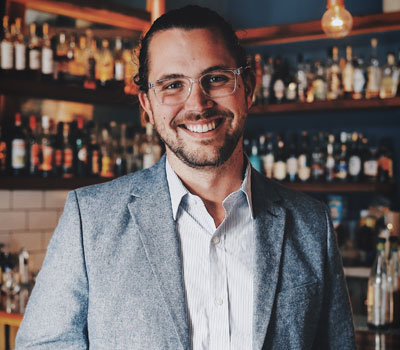A native of Southern California, Sam Rethmeier cut his chops at Frasca Food & Wine in Boulder, Colorado, and then honed his skills at Nancy Silverton’s Chi Spacca. He returned to the Los Angeles area in 2017 to take over the wine program at Walter and Margarita Manzke’s bustling République. Today, his list is dominated by French selections but he also feeds the demand for Napa Valley, as he discussed in our December article on cabernet touchstones.


You list Echo de Lynch-Bages Pauillac as the most successful new addition to your list: Is Bordeaux as a category strengthening?
Bordeaux as a category is totally strengthening. Look at the progression: You had the over- “Parker-ization” and then the price increases in Bordeaux. People were going nuts over the Bordeaux futures. Then there was this huge let down when they received the wines.
Then suddenly we turned our attention away from Bordeaux and said, okay, “let’s do Burgundy.” And now you’re seeing Burgundy prices inflate—it’s gotten to the point where if you want to drink Villages level, you’re going to spend a couple hundred bucks, whereas you can drink a second label from Bordeaux and get a much better wine for the price.
There’s also so much more brand recognition with Bordeaux. If you have a guest who doesn’t know a lot about wine, they will, guaranteed, at least know a bit about Bordeaux. It’s one of the last regions in France where you are buying for the producer versus the place. So, across the board for the year, the best-selling wine by the glass was Bordeaux, and it would beat out almost every other wine by the glass, almost two-to-one.
A Cahors is your number two best-selling wine by the glass. When did your guests grow interested in French malbec?
Funny that you would ask that. I sat down with the rep who was selling that wine and he said, “Look, withhold any judgment and just try this wine.” And I was blown away. I was like, ‘Oh my God, I would love this. My wife would love this. My parents would love this, and look, everyone will totally drink this wine and it’s not expensive.’ I said, “Let’s take three cases and see what happens.” I think we sold out in less than a week.
Moving into the new year, I’m going to have an entire section devoted to [French] malbec. I jokingly told my team that it’s kind of the Super Tuscan of France in that it’s going to appeal to a huge audience. It’s not done in the big, Argentinian style, and you’re starting to see more natural winemakers. Château du Cedre has been around for a while, and there’s also a new producer called Domaine la Calmette: it’s very natural winemaking and the wines are totally delicious.
Also, it’s a very low-risk selection that, at $60 or $70 a bottle, people are willing to try.
photo by Joanna Soon
Karen started her career in wine as an enologist at Araujo in Napa Valley, having graduated with a BA in International Relations and French from UC Davis. She went on to handle education and sales support for Indie Wineries in California before joining the sommelier team at Spago for a year. For the past several years, she has been working with the publishing group behind the Somm Journal, part of the launch team for The Clever Root, where she served as Managing Editor for two years, then going freelance as a Senior Editor, to raise her daughter, who is now two years old. She also contributes to the Josephine Porter Institute’s newsletter on Applied Biodynamics. Karen has studied in Bordeaux and worked in the Rhône, led there by a glass of Domaine du Pegau, which sparked her interest in the Rhône. And it was a bottle of Diamond Creek’s Gravelly Meadow from the early 1990s that had shifted her view of Napa Valley—her family has been in the Valley for five generations, and once had a dairy farm on the land that became Lake Berryessa.















